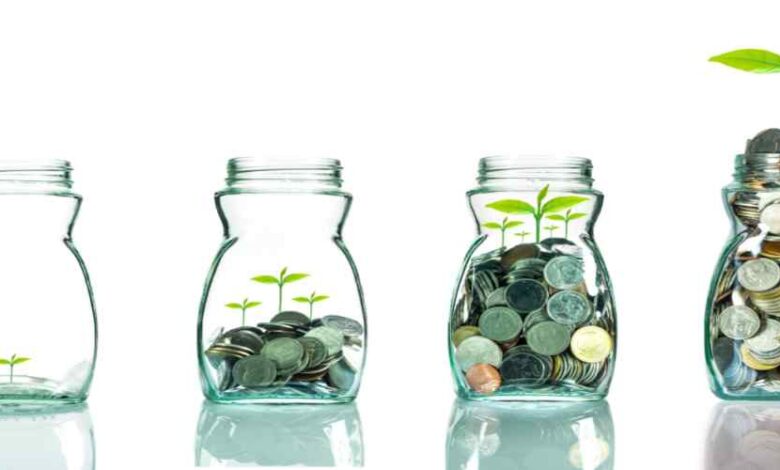Choosing the Right Savings Account: Your Money’s Home

In the dynamic world of personal finance, where technology is constantly reshaping the way we interact with our money, the seemingly simple decision of where to keep your savings has become surprisingly complex yet profoundly important.
Many individuals still rely on the traditional savings account offered by their familiar brick-and-mortar bank, often unaware that this choice might be costing them hundreds or even thousands of dollars in lost interest and unnecessary fees over time.
A savings account is not just a temporary holding cell for your cash; it is the fundamental, secure home for your hard-earned money, particularly for crucial funds like your emergency savings and short-term goals.
The features of this financial product—specifically its interest rate, liquidity, and fee structure—directly impact how quickly your money grows and how easily you can access it when a crisis strikes.
Therefore, understanding the nuances between conventional banks, modern digital-only institutions, credit unions, and other specialized accounts is absolutely essential for maximizing your financial resilience.
By taking the time to research and select the account that best aligns with your financial habits and objectives, you ensure your money is working as hard as possible for you, transforming a passive deposit into an active component of your wealth-building strategy.
I. The Fundamental Role of a Savings Account

Before exploring the different types of accounts, it’s vital to clearly define the non-negotiable role a savings account plays in your financial structure.
A. Safety and Security First
The primary function of any savings account is to provide a safe and secure environment for your cash reserves. Ensure that any institution you choose is federally insured (e.g., FDIC in the US or similar government guarantee schemes in other countries), guaranteeing the safety of your money up to the legal limit.
B. Liquidity for Emergencies
The funds held here, particularly the emergency fund, must be easily and immediately accessible without significant penalty or delay. This rapid liquidity is non-negotiable, as the money is meant to be used during an urgent, unexpected crisis.
C. Protection Against Volatility
Savings accounts serve as a crucial buffer, protecting your cash from the volatility and risk of the stock market and other investments. Your emergency fund should never be invested in anything that can lose value.
D. Earning a Real Return
The account should ideally offer an interest rate that is high enough to at least combat the effects of inflation, preventing your cash from losing its purchasing power over time. Even a small increase in the Annual Percentage Yield (APY) can make a significant difference over a decade.
II. Type A: Traditional Brick-and-Mortar Banks
These are the large, familiar financial institutions with physical branch locations and ATMs accessible almost everywhere.
A. The Benefits of Physical Presence
The main advantage of a conventional bank is the convenience of a physical branch, allowing you to conduct complex transactions in person, speak directly with a representative, and deposit cash easily. This personal touch is reassuring to many people.
B. Access to Comprehensive Services
Traditional banks typically offer a full spectrum of financial products, including checking accounts, mortgages, personal loans, and wealth management services, making them a one-stop-shop for all your needs. Often, they will waive fees if you maintain several accounts with them.
C. The Low-Interest Trade-off
The major drawback is that traditional banks often pay significantly lower interest rates (APYs) on their savings accounts compared to their digital counterparts. This is because the high cost of maintaining physical branches and large staff must be offset somewhere.
D. Fee Structures
Be highly vigilant about their fee structures, which can include monthly maintenance fees, overdraft fees, and low-balance fees. These charges can quickly negate any interest earned if you don’t meet their minimum balance requirements.
III. Type B: High-Yield Digital-Only Banks

These online institutions operate without physical branches, passing the cost savings directly back to the customer in the form of higher interest rates.
A. The APY Advantage
Digital banks consistently offer the highest Annual Percentage Yields (APYs) for savings accounts, often paying 10 to 20 times more interest than traditional banks. This is the primary reason for choosing a digital bank for emergency and short-term savings.
B. Low or No Fees
Most high-yield digital accounts feature no monthly maintenance fees and often have no minimum balance requirements, making them accessible to savers of all income levels. This lack of fees ensures that every dollar you save actually stays in your account.
C. Seamless Digital Experience
They typically provide a highly intuitive and efficient mobile and online platform, making transfers, tracking, and customer service fast and simple. Technology is integrated to enhance the user experience rather than being an afterthought.
D. The Trade-off: Cash Deposits and Personal Service
The main disadvantages are the difficulty in depositing physical cash (often requiring a workaround like depositing into an external account first) and the lack of face-to-face assistance for complex issues. Their customer support is typically done via phone, chat, or email.
IV. Type C: Credit Unions and Community Banks
Credit unions are non-profit financial cooperatives owned by their members, offering a distinct alternative to commercial banks.
A. Membership Benefits
Credit unions are known for their member-centric focus, often providing personalized service and a willingness to offer more flexible terms on loans and better rates on savings compared to large banks. You must, however, meet specific membership criteria (e.g., location, employer, affiliation).
B. Competitive Rates and Lower Fees
Because they are non-profit, credit unions tend to return profits to members through lower fees and often higher savings interest rates than large traditional banks, striking a good balance between personalized service and decent returns.
C. Community Focus
They often invest in their local communities and are ideal for people who value banking with an institution that has a strong local presence and social mission. Their size often translates to highly attentive customer service.
D. Limited Technology and Scope
The technology and online platforms of credit unions can sometimes lag behind the major digital banks. Additionally, their ATM network and branch locations are often highly localized, limiting access when traveling outside their service area.
V. Type D: Specialized Savings Products
Beyond the three main institutional types, several specialized savings vehicles offer unique benefits for specific goals.
A. Money Market Accounts (MMAs)
MMAs are similar to savings accounts but often require higher minimum balances and may offer check-writing capabilities and debit card access. They often pay competitive interest rates, making them suitable for very large emergency funds.
B. Certificates of Deposit (CDs)
CDs are time-deposit accounts where you lock your money away for a specific period (e.g., 6 months to 5 years) in exchange for a higher, fixed interest rate. They are perfect for money you know you won’t need until a specific future date, but they sacrifice liquidity.
C. “For Kids” Savings Accounts
These are designed to help parents teach children about saving. They often have no fees and low minimum balance requirements, and sometimes offer a slightly higher interest rate on the first small deposit amount to encourage early saving.
D. Brokerage Cash Management Accounts (CMAs)
Some brokerage firms offer CMAs, which act like checking and savings hybrids. They offer high liquidity, decent interest rates, and the benefit of having your savings and investment portfolio managed under one single dashboard.
VI. The Decision Matrix: How to Choose the Best Account
Selecting the right savings account is a matter of prioritizing what is most important to your personal financial situation.
A. Define Your Primary Goal
First, identify the purpose of the money. Is it a long-term emergency fund (needs high APY, high liquidity) or a fund for short-term, irregular bills (needs high liquidity, local ATM access)? Your goal dictates the optimal type of account.
B. Prioritize the APY and Fees
For the vast majority of savers, the Annual Percentage Yield (APY) and the absence of fees are the most critical factors. Always favor a high-yield digital bank for your primary emergency fund unless physical cash deposits are an absolute necessity.
C. Assess Cash Deposit Needs
If you frequently deal with cash (e.g., tips, garage sale money), you might need a secondary, no-fee account at a local bank for easy cash deposits, even if you transfer the money to your high-yield account later.
D. Review Account Minimums
Ensure you can comfortably meet any minimum balance requirements to avoid unnecessary maintenance fees. If the requirement is too high, choose an account that has no minimum balance or a low one.
E. Check Withdrawal/Transfer Limits
Be aware of federal regulations (in some regions) that limit the number of monthly external transfers or withdrawals you can make from a savings account. This is typically six, and exceeding it can lead to fees or account conversion.
Conclusion
The strategic choice of where to house your savings is a foundational element of sound personal finance.
This seemingly small decision has a tangible impact on your money’s growth and accessibility in times of crisis. High-yield digital banks offer the best mathematical advantage by maximizing interest and minimizing fees for your emergency reserves.
Traditional banks and credit unions provide valuable service and convenience for those who prioritize face-to-face interaction or frequent cash deposits.
By carefully weighing the APY, fee structure, and required liquidity against your personal habits, you transform your savings into a proactive tool. Choosing wisely ensures your cash is always working efficiently, safeguarding your future and empowering you to reach your financial goals faster.


